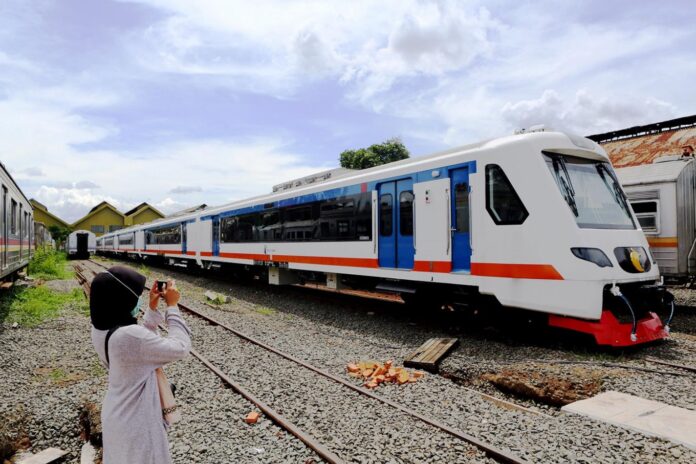The Jakarta-Surabaya semi high-speed train project is once again under scrutiny, with the aim of reclaiming its spot in Indonesia’s National Strategic Project (PSN) list beyond 2024. As the presidency of Joko Widodo (Jokowi) approaches its conclusion, attention turns to reevaluating this ambitious endeavor, driven by its potential for technological advancement in the railway sector and the promising economic benefits it could bring to the nation.
Aditya Dwi Laksana, Chairman of the Forum on Railway Transportation and Inter-City Transportation of the Indonesian Transportation Society (MTI) Center, strongly believes that the Jakarta-Surabaya semi high-speed train project remains worthy of consideration for inclusion in the PSN list beyond the current administration’s tenure.
One crucial factor that makes this endeavor compelling is the anticipated influx of foreign investors, which is expected to have a positive impact on the transfer of advanced railway technologies within the country.
As the railway industry embraces cutting-edge innovations, foreign investors’ presence will open up new avenues for knowledge exchange and technological collaboration. Drawing parallels with the successful investment by China in the Jakarta-Bandung High-Speed Rail project and similar collaborations with Japan and other interested countries, Aditya emphasizes the significance of diversifying international partnerships.
“Relying on a single country for our railway technology needs may not be ideal for the long run,” expressed Aditya during a recent interview (July 26, 2023).
Looking beyond the technological aspects, the development of semi high-speed railway networks connecting prominent cities like Surabaya is poised to unleash a host of economic opportunities. Aditya expounds on the potential for economic growth, particularly in regions intersected by the semi high-speed rail project.
According to the National Railway Master Plan (RIPNas) for 2030, envisaging the extension of high-speed railways to the North Coast of Java, the cities of Cirebon, Tegal, Bojonegoro, and others stand to benefit from enhanced connectivity and economic development.
However, as the project seeks reinstatement in the PSN list, certain challenges lie ahead, including the careful allocation of routes. Beyond 2024, the government’s proactive role in addressing this aspect, particularly in light of the Jakarta-Bandung High-Speed Rail’s possible extension to Surabaya, will play a pivotal role in shaping the project’s future.
The Ministry of Transportation, represented by Adita Irawati, spokesperson of the ministry, previously made a proposal to remove the Jakarta-Surabaya Semi High-Speed Train project from the PSN list. The Ministry presented this proposal to the Coordinating Ministry for Economic Affairs, and the decision on the matter is eagerly awaited.
The consideration for removal was based on several factors, including the project’s yet-to-commence status. Simultaneously, the Ministry of Transportation has strategic plans in place for the Jakarta-Bandung High-Speed Rail’s extension to Surabaya.
As the government strives to align national interests and make informed decisions, the fate of the Jakarta-Surabaya semi high-speed train project hangs in the balance, eagerly awaited by stakeholders and the public alike.























